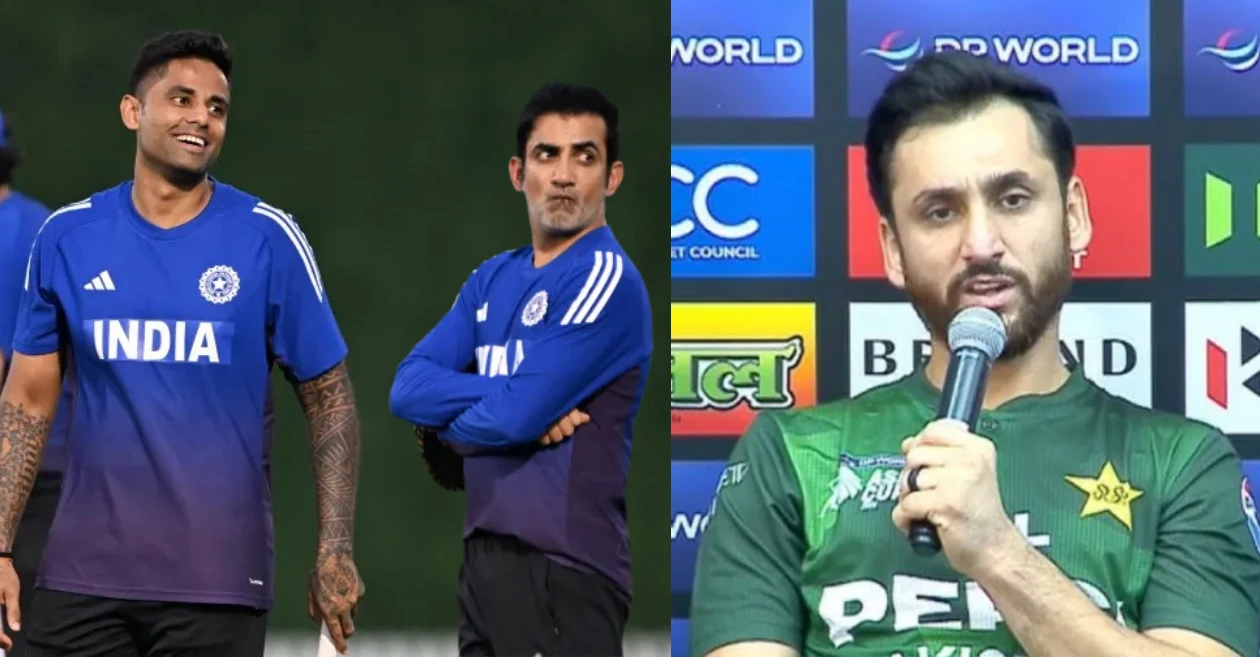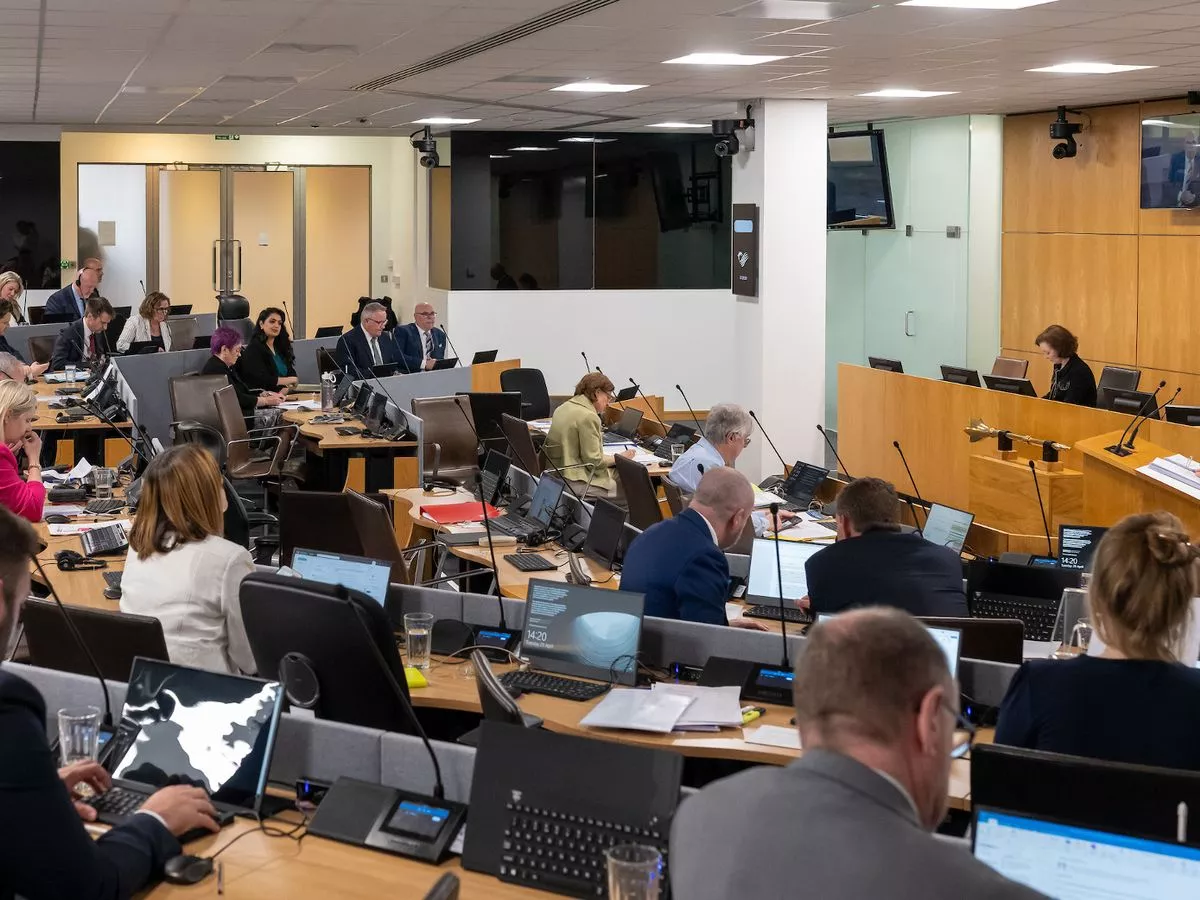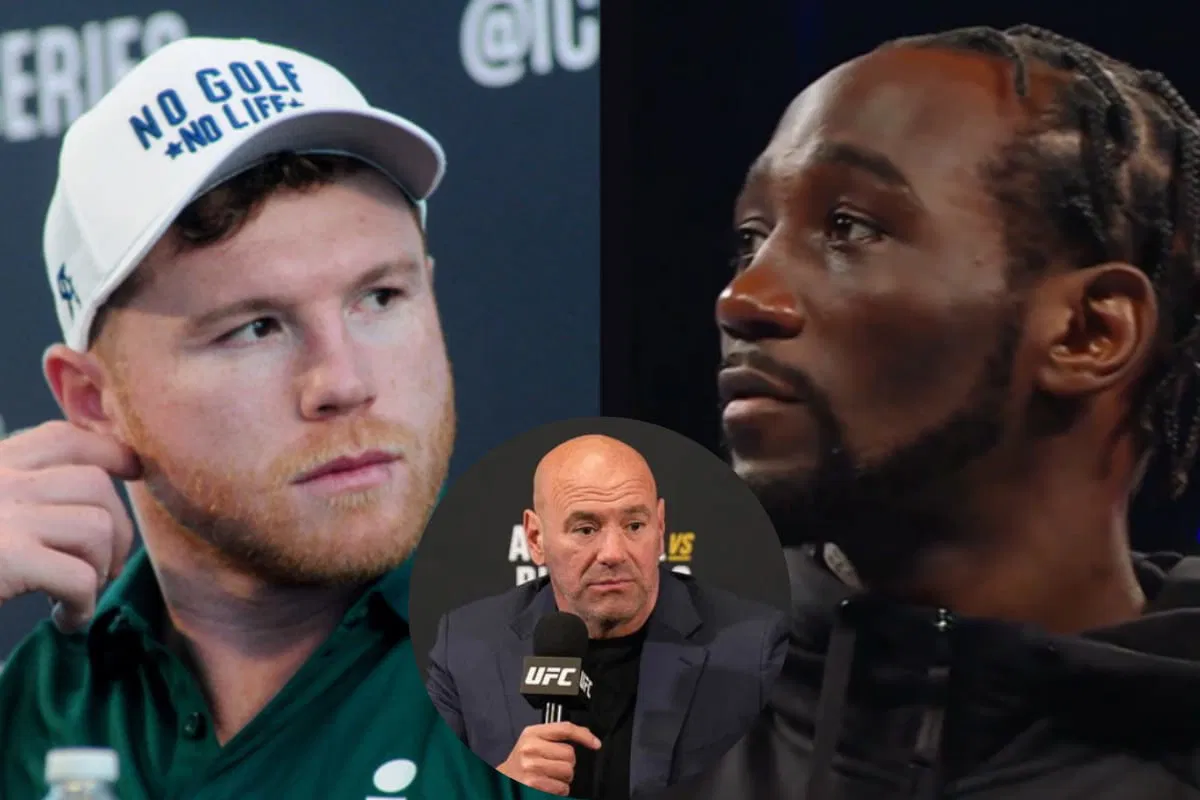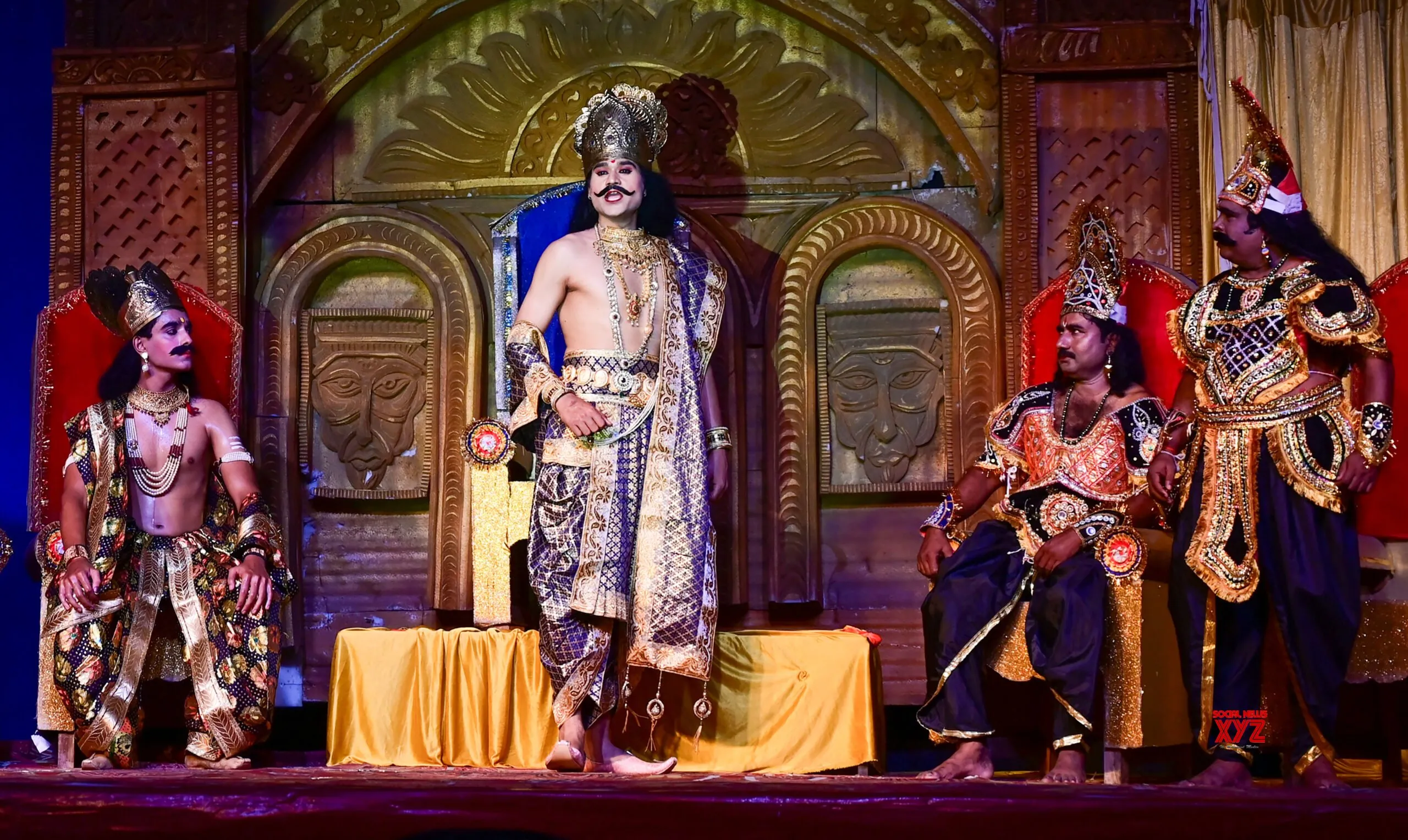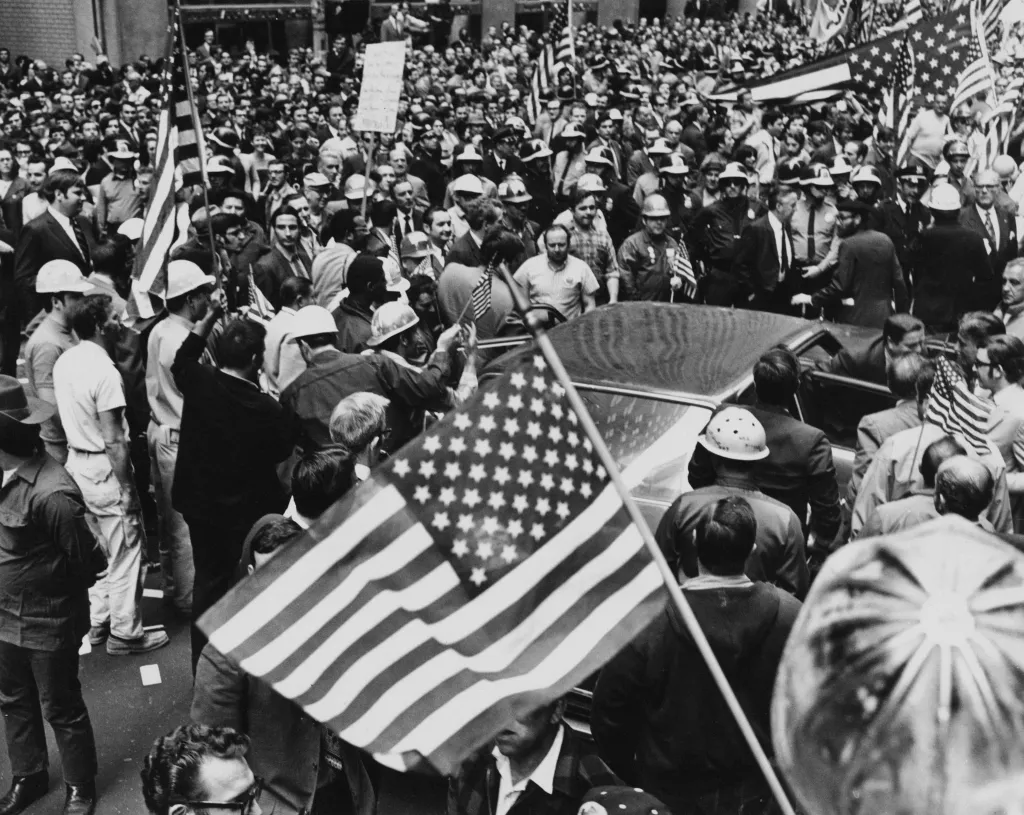
The central question at the heart of so much of today’s political commentary is who best represents working Americans. Once the working class was solidly Democratic. Not anymore. Why did blue collar Americans — the heart of FDR’s New Deal Coalition — turn toward the Republican Party? That realignment, slow and seismic, is one of the most consequential in American political history. To understand what happened, it is instructive to go back to a violent afternoon in downtown Manhattan — May 8, 1970 — the day that labor erupted.
I was in New York City then, listening to WINS radio, following the chaos as construction workers stormed Wall Street, clashing with student demonstrators in what would become known as the Hard Hat Riot.
No one knows exactly what triggered the clash — a student chanting “Ho Chi Minh!,” some perceived desecration of the American flag — but all of a sudden the hard hats surged forward, a veritable ocean of men, and a brawl broke out resulting in many injuries, mostly to students.
I was 19 and an apprentice film editor for the Maysles brothers, working on “Gimme Shelter.” Just days earlier, the National Guard had gunned down four Kent State University students protesting Nixon’s expansion of the Vietnam War into Cambodia. As an enraged participant in the anti-war movement, I was convinced that we were on the right side of history — and certain the hard hats were on the wrong side.
Decades later, sitting in another editing room, working on a PBS documentary on the riot, based in part on David Paul Kuhn’s book, “The Hardhat Riot,” I came to realize that what happened that day was not just a fleeting moment of violence, nor was it just about the Vietnam War. In fact, most Americans, including the working class, had turned against the war by that point, especially after the Tet Offensive showed its futility.
The Hard Hat Riot was more a warning shot in a war we are still fighting today — a war of class, culture, and identity that has fractured this country in so many ways.
When I first started interviewing the men who were there that day — construction workers, union guys, and cops — it became clear: they weren’t just the caricatured reactionaries we so easily vilified. These were the sons of Irish, Italian, and Eastern European immigrants who had worked themselves out of destitute poverty and fought proudly in World War II. Many had helped build New York City’s skyline, and many of them had voted Democratic their entire lives. They had grown up worshipping FDR, believing in the dignity of hard work and the promise of the American Dream.
It’s easy to reduce the riot to a simplistic headline: blue-collar patriots versus privileged student radicals. But the Hard Hat Riot was about a deeper, more dangerous rupture: the unraveling of the FDR coalition that once united factory workers, immigrants, intellectuals, and activists under a shared political vision.
By 1970, that coalition was coming apart. Working-class Americans felt betrayed. Deindustrialization was accelerating. Jobs were disappearing and wages couldn’t keep up with inflation. There was a troubling crime wave and the political elites seemed to be turning their backs on the blue collars.
These Americans were seeing their sons and brothers sent off to fight and die in a foreign war while college students like me had deferments, marched in the streets, and disparaged the soldiers for going. Of course, most of them couldn’t afford to go to college or flee the country. At the same time, many felt duty bound to follow the law and serve their country when called.
Overall, they experienced humiliation and rage at watching their values, their sacrifices, and their struggles mocked by more privileged people who were convinced they had all the answers.
Nixon seized on this anger, rebranding Republicans as the party of the “silent majority.” The working class that once carried the Democrats to power began to walk away. In 1972, Nixon won a landslide victory, sweeping FDR’s voters into the Republican fold. The Democrats, increasingly diverse by race and gender, had lost their grip on the blue-collar vote.
And here’s the cruel irony: many of these men were building the World Trade Center — itself an emblem of global commerce. The men whose pride was etched across the Manhattan skyline would see their communities hollowed out by free trade, globalization, and an economy that favored financiers over laborers. Their working-class wages would peak in 1973, never to return.
The Hard Hat Riot was about whose pain gets heard, whose anger gets dismissed, and whose version of America gets to prevail. It was a moment that exposed the rift between the educated elite and the working class-still defining much of our politics today.
Later that evening, I found myself at Malachy’s Irish Pub on the Upper West Side, watching the Knicks defeat the Lakers in Game 7 for their first NBA championship. The place erupted with joy. Here I was, drinking and celebrating with some of the same men who, hours earlier, may have been attacking my peers on Wall Street. Crazy how one moment you could be punching each other in the face and a few hours later buying each other drinks.
Late that night, still buzzing from the Knicks’ win, I heard that President Nixon had made a surprise nighttime visit to the Lincoln Memorial in a failed attempt to connect with anti-war protesters. I despised Nixon then, more than any politician I could imagine. But now, looking back, I realize there was something poignant about his effort.
In his clumsy way, Nixon was trying to bridge the generation gap — he was trying to listen to the demands of young protesters, trying to understand their grievances. I spoke to one who had been at the Lincoln Memorial when Nixon showed up. As he described the scene, I found myself feeling an unexpected empathy for Nixon.
It’s hard to open yourself up to the feelings and emotions of those you perceive as the “other” or “enemy.” That is part of what we do as documentary filmmakers. I spent my youth convinced that progress meant winning the culture war — defeating the other side with better arguments, louder protests, superior values. But sitting across from these men, now old, weathered, still proud, I realized: nobody wins by crushing the other side.
My upcoming film, “Hard Hat Riot,” includes archival footage of the actor Harvey Keitel, then part of an NYU film collective gathering with fellow protesters in Washington, D.C. Meeting in a hotel room to debrief after a week of demonstrations, he questions whether they are using the most effective tactics. He says, “Do you think you’re going to get them to walk out by saying, ‘Hey, you f--king dumb construction worker, you f--king goon.’?”
Another student considers what he is saying and responds, “What we’re doing is we’re making the construction workers our enemy instead of … who the real enemy is, we’re making the construction workers our enemy.”
I myself also came to understand you can’t declare victory over people’s lived experiences — their fears, their dignity, their disillusionment.
Their stories matter.
If you want to understand the cultural earthquake shaking American politics today — the rage of forgotten workers, the suspicion of elite universities, the collapse of old political alliances — you need to go back to a violent afternoon in lower Manhattan. I knew back then that May 8, 1970, was a historic day. Now I have a much better understanding of exactly why.
